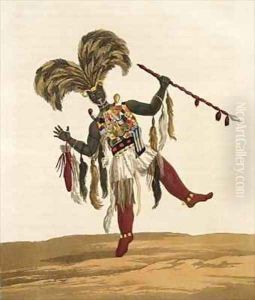Thomas E Bowditch Paintings
Thomas Edward Bowditch was a British traveler, author, and naturalist, not primarily known as an artist. Born in 1791, Bowditch developed an interest in the natural sciences and exploration at a young age. He is best remembered for his work in West Africa, particularly in what is now Ghana, during the early 19th century.
Bowditch went to Africa in 1813, employed by the African Company of Merchants to work at their Cape Coast Castle in Ghana. His role was initially as a writer, but his interest in the local culture, language, and natural history quickly became the focus of his work. During his time in Africa, Bowditch collected a significant amount of ethnographic and scientific data.
In 1817, he led an embassy to the Asantehene (the king of the Ashanti Empire), which resulted in the Mission from Cape Coast Castle to Ashantee, his most famous work. Published in 1819, this book provided detailed observations of the geography, flora, fauna, and cultural practices of the region. The work was praised for its insights and the quality of its detailed engravings, charts, and appendices, which included a vocabulary of the Ashanti language and other important information on the region.
Though Bowditch's contributions are primarily in the realms of ethnography and natural history, his work did include detailed descriptions and drawings that have artistic merit. His observations and illustrations contributed significantly to Western understandings of West African cultures and environments.
Tragically, Bowditch's career was cut short when he died of fever in Gambia in 1824, at the age of 33. His early death was a loss to the fields of exploration and natural science. Despite his short life, Bowditch's impact was considerable, as his work continued to influence scholars and explorers who followed in his footsteps.

